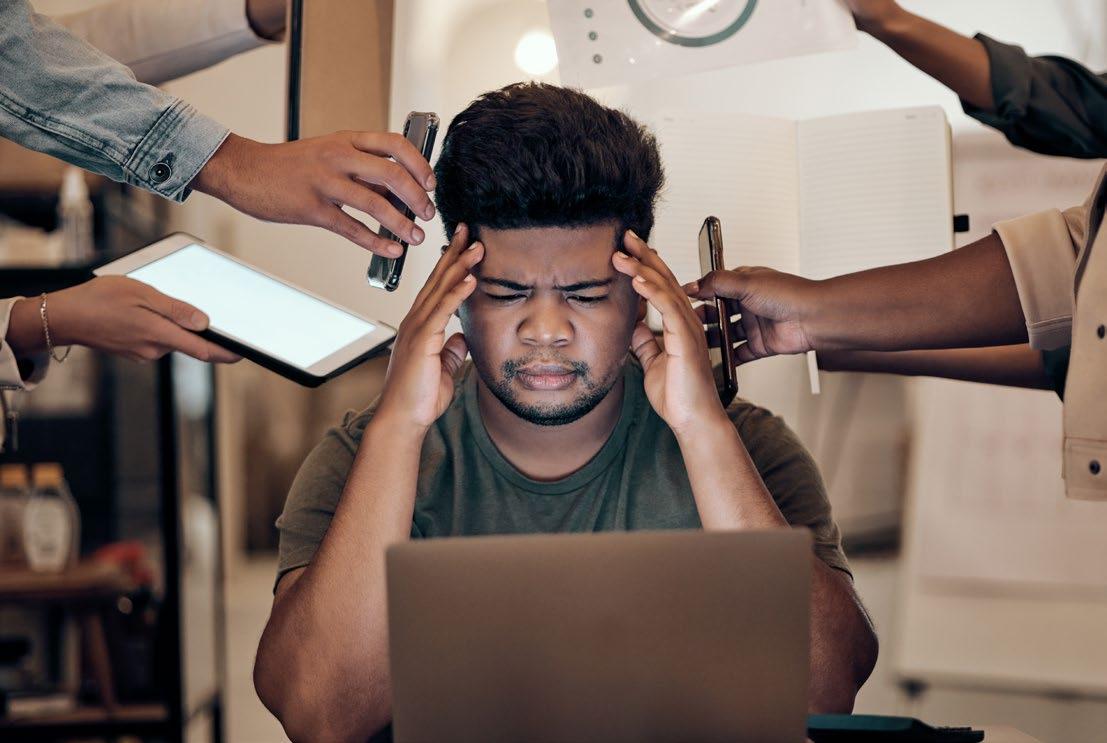Vitamin


Vitamin

We deliver quality, organisation and people – focused services with a vision of being the best and not the biggest.





We believe in innovation, agility and quality and to achieve that, our colleagues are supported to be the best they can be.
We have over 50 colleagues attending PAM funded University courses.
We deliver over 40 training, development and awareness sessions every month to our colleagues on a range of different topics.
Our colleagues are supported in developing their writing skills and getting published is part of the achievement.
Our e-learning platform is going from strength to strength, with a wealth of on-demand webinars for our colleagues from every avenue in the business.

PAM Academy facilitates the growth and development of all colleagues at PAM Group and supports the wider management team with evidence based learning, client focussed insight and delivery of recognised industry acceditations.

We would like to talk to you if you are interested in joining the Occupational Health business here at PAM Group, please contact our recruitment team at Recruitment@pamgroup.co.uk to arrange a call.
www.pamgroup.co.uk
The world of Occupational Health and workplace wellbeing is constantly developing. Encouraging our colleagues to keep abreast of developments, means our clients and their employees get the best and most up to date advice.
The Loneliness Epidemic

Page 4-7
Why Ergonomics is the Key to a Healthy and Productive Workplace


Page 8-9
Help employees find mental balance in a technological society

Page 10-11
Coping with flare-ups
Page 12-13
Vitamin D and you: the essential facts for Wellbeing


Page 14-15
Drug and Alcohol Awareness in the Workplace

Page16-17
Gut feeling in clinical practice?

Page 18-19
Assistive Technology for Neurodiversity
Page 20-21
Prioritizing Heart Health
Page 22

Let me paint you a picture: Sam is a 42 year old female, she is a single mother of twin 18 year old boys. Six weeks ago she waved goodbye to them as they set off on their gap year to travel and volunteer at various conservation projects in Nepal. For the past 18 years her focus has been on her boys, cooking, cleaning and ferrying them back and forward to various sporting events, which didn’t leave a lot of time for herself. Since the boys have left the home is quiet, it is neat and tidy, but her car sits on the drive as mum’s taxi is no longer needed. Cooking is harder when it is just for one person. She is an only child and her parents retired to live in Spain 2 years ago. Her weekends are long, there hasn’t been time over the past 18 years for friends, and she is at a loss as to what to do. She feels adrift in her world.
She works remotely, going into the office once a week. On Monday she is in the office and whilst making the first coffee of the day, she listens to her colleagues excitedly tell of the things they got up to at the weekend, the family meals out, trips to the cinema, the drinks, the laughs with friends. She has nothing to contribute, so she silently slips away to her desk as she doesn’t feel a part of these conversations any more. The pain of missing her boys is physical, her loneliness increasing every day. She tries to concentrate on work, but these feelings of being adrift, of being lonely, of not knowing who she is any more, are overwhelming. By the end of the working day, she is feeling tired and stressed as she knows she didn’t do her best work, that her attention to her work tasks is slipping, but she doesn’t
know what to do. She is struggling to put into words how she is feeling, so how can she talk to her manager or HR. She doesn’t know what to do to help herself.
For many of us we can experience loneliness at certain times in our lives, but what is loneliness, and what does it mean to each of us?
Put simply, loneliness is a feeling of lack of connection or unwanted isolation. It can happen due to changes in living arrangements, divorce, moving location, bereavement, becoming a carer, poor health or mobility or financial issues. In surveys completed in 2018/19 and 2021/22 approximately 10% of adults reported feeling loneliness and this was found across all ages, though there was a high incidence in adults over 70.

For some of us it can happen unexpectedly, we go through a divorce, or like Sam the children leave home and all of a sudden the house that was filled with noise and chaos is quiet, tidy and we are alone, there is no one to cook meals for, no one to demand our time and attention. The children that have been our focus for the past 18 years no longer need us. Initially the peace and quiet can seem lovely, but quickly we start to experience the feelings of loneliness and for some it can become an overwhelming feeling. We have spent so many years being a partner, a wife, a husband, a parent that we have forgotten to spend time focusing on
our individual needs.
It’s important to remember that being alone and feeling lonely are different. Being alone is the absence of others around us, whereas, loneliness in the UK is generally defined as a subjective and unwelcome feeling which results from a mismatch in the quality and quantity of social relationships we have and those that we desire. It could mean that we could be in a crowd of people and still be lonely, whereas some people chose solitude and are content.
Symptoms of loneliness will vary from person to person and can be dependant on their individual circumstances. Loneliness can cause you to:
• Feel insecure
• Feel sad, empty, disconnected
• Feel isolated or left out
• Feel like you are not being heard, that you don’t matter
It can cause a decrease in energy levels, or impact sleep and in some cases it can cause mental ill health. With Sam, she is feeling lonely, feels like she has nothing to add, so she becomes withdrawn and in doing so isolated herself further. Loneliness happens when we feel distressed when we are alone, while social isolation is the lack of regular interactions with other people.

There are a number of solutions, however, it is not a one-size fits all approach, each person has to find what works for them individually. Acknowledgment is the key. Acknowledging how we are feeling, the fact that we are feeling lonely. Feeling lonely can be overwhelming, but it should signal to each of us that we need to do something about it. For example, if we are thirsty, we know we need to have a drink. Likewise with loneliness we need more social connections but how do we build social connections?
Volunteering has lots of benefits. Many employers now have a volunteering policy that allows colleagues time to participate in volunteering projects. Being involved in volunteering can bring meaning and purpose into our lives, keeping us mentally stimulated and allowing us to become part of something bigger than ourself. By giving back to others we can increase our feelings of selfworth and self-esteem. It provides a sense of community, introduces us to new friends, or builds relationships with work colleagues involved in the same project, creating a common bond. As a volunteer we typically can interact with people from diverse backgrounds, allowing us to learn new perspectives. The hands on experience and training we get from volunteering, can help build new skills, as well as develop ones we already have. It can open up new prospects, new careers that previously we would never have considered. Many of us use volunteering as a way to pursue hobbies, or forgotten past times, for example having a love of dogs might lead us to volunteering in a dog
shelter, or a love of children to helping out at a kids camp, or a love of being outdoors to help with a community garden project. It can stimulate our creative side, and motivate us, which in turn will impact our personal and even professional lives.
Make time for family and friends. It is very easy to let friendships drift, to get so caught up in life that we forget to stay in touch. If someone was a true friend, they would be delighted to get a text or a call, no matter how long it has been since we last spoke. Too often they have been caught up in life as well. So send that text, make that call, organise that coffee, or a visit. It is likely to put a very big smile on your friends face as well. If family are living abroad then book a flight, go and see them. Make a cake and take a slice round to an elderly neighbour, have a cup of tea with them. Not only will we make their day, but we benefit from the visit too by giving back to our community.
Get outdoors. Studies show that spending time outside in nature and in natural light can boost our mood and reduce stress levels. For those of us that work remotely, going for a walk after work can allow us to interact with other people as well as give the benefits of being outside in nature. Going for a walk and taking photographs is a great mindful activity. Most of us have mobile phones with cameras. Try doing the alphabet walk. Start with the letter A and take pictures of as many things as you can see that begin with the letter A, next walk letter B, then C and so on. Activity like this calming, and it increases our awareness of our surroundings and makes us aware of nature.
Join a group or develop a new hobby or pastime. Making new friends can be a daunting prospect. Whether it is due to moving to an new area, or family and friends moving away, the need to establish new friendships can impact many of us. This is where we need to think about what activities we enjoy for example, walking, cycling, photography, gardening, bird watching, swimming. What made you laugh and smile as a child? Was it cycling, or painting, playing football, or collecting sea glass? We can use social media to search for local groups. Whilst it is good to join an online community, be mindful not to spend too much time on social media platforms, use them to gain an understanding of local groups but remember that people will only post their “perfect lives”, and comparing ourselves to others can have a detrimental effect.
The MeetUp platform is a social networking site and is a great place to find local groups to join. Many of these groups host a variety of events that can span from coffee evening, cinema trips, walks, bowling, games nights, meals out or even weekends away. Finding people with a common interest, is a great way to build new friendships. There are also a number of organisations that specialise in holidays for solo travellers. These can range from activities like walking, cycling, swimming holidays to city breaks, or relaxing on a beach. Join a local choir, or amateur dramatics society, a local book club, a quiz club, car club, modeling club or a knitting group, no matter where we live, there will be a local group to join. If one doesn’t exist, could we create one? Decorate the house, or change the garden. Activities like this can keep us occupied and the end result will make us smile and be rewarding. Take a class. There is no age limit on curiosity or learning. Is there a new skill you always wanted to learn but didn’t have time? Signing up for a class can teach a new skill, or a new language. Many of these classes take place over a number of weeks, giving time to get to know people. Join a local gym as many of them run exercise classes, yoga, Pilates, spin, boxercise, or a local Zumba class.
Dealing with loneliness is not just about building social connections. There are a number of steps we can take to support ourselves to prevent loneliness from having detrimental effects on our health.

Eat a healthy diet. For some cooking for one person is a chore, but it is important that we continue to eat properly and give our body the building blocks it needs. Why not batch cook some meal and freeze portions to have on work days? Try and limit the amount of sugary snacks. It is very easy when we are tired and feeling low to reach for chocolate, but these sugary snacks will give us a boost for a short time, but can then cause a slump in mental and physical energy, leaving us feeling worse that we were.
It is important to have a good sleep routine. Try to go to bed at the same time each night and get up at the same time each morning, even on the weekends. It is importance to make sure your bedroom is quiet, calm, relaxing, dark and a comfortable temperature. Try and keep TV’s, computers, and smart phones out of the bedroom. If having a smart phone in the room is necessary, then make sure the blue light filter is turned on, and your phone is on Do not disturb.
Practice gratitude. It can be difficult to notice positive things in life when we are dealing with loneliness. Try to get into the daily habit of writing down 3 things I am grateful for each day and something positive that happened. If the positive thing was due to someone else, then thank them, let them know they made a difference. When we are having a really dark day, being able to read all the things we were grateful for in preceding days, can be helpful. Studies have also proven that daily gratitude writing reduced loneliness and improved health among adults. Fill your home with sound as it may help the environment feel less lonely and overwhelming, and can assist with occupying thoughts. Music can boost your mood, audiobooks can provide a distraction or a temporary escape. Podcasts and talk radio inform and entertain, but the conversations approach may help
create a sense of connection. Try opening windows to let the sound of birds singing into the home, this can help us feel connected to the wider outside world.
Seek help. Many employers offer an Employee Assistance Programme which will offer talking therapy (counselling). Talking therapies allow us to explore and understand feelings of loneliness and can help develop positive ways of dealing with them. Whilst therapy in and of itself can help combat loneliness it can help us explore the role that loneliness has in our life and how it is affecting our well-being.
Work can also play an important role. Not only does it provide us with an income, but it gives structure to our days, a sense of purpose and social connections. Employers need to be proactive and incorporate questions about loneliness within their people surveys to promote the importance of social wellbeing in the workplace. Certain roles, and workplace transitions can increase the risk of loneliness, e.g. starting a new role, home working, returning after maternity/paternity leave, returning to work after a long term absence, or following bereavement. An employee who already has existing feelings of loneliness due to their home lives, can carry these feeling into work. Flexible working or working remotely, poor team dynamics or a negative work culture can exacerbate loneliness.
The government published guidance on employers and loneliness in May 2021 as a result of the pandemic, but the guidance is still relevant today.
The aim of every organisation should be to destigmatise the issue of loneliness. Whilst employers and managers cannot force social connections, they can create opportunities for team members to have meaningful conversations with others. Some examples would be:
Using surveys to gather information relative to employees wellbeing, incorporating loneliness into the questions
Having 1-2-1 meetings with team members to check to see how they are, especially colleagues who work remotely
Small gestures and act of kindness – saying hello, acknowledging birthdays
Organise team activities to encourage interaction
Have champions in the workplace and use “happy to chat” badges to encourage employees to speak to each other, or a buddy system for those returning after a period of absence










Signpost to local counselling or to the Employee Assistance Programme (EAP) for talking therapy
Use of Occupational Health for advice on any adjustments that may be required to support the employee if their mental health is impacted. By putting adjustments in place, we can in many cases, prevent absence from occurring, which
for some employees may exacerbate their loneliness
• Run Wellbeing sessions
e.g. Social Connectivity, Developing a Positive Mindset, Boosting Resilience, Having Quality Conversations, Promoting Good Sleep, Emotional Regulation
• Allow volunteering days per annum and encouraging employees to utilise them
By encouraging openness and having approachable managers, and a good support system, then it is more likely that employees will discuss their feelings and ask for help when they need it. Loneliness is on the increase across all ages, so it is importance that employers, managers, and us as individuals look at what we can do to reduce the impact of this growing issue.

Ergonomics is the study of how people interact with their environment. It is concerned with designing workplaces and products that are safe, comfortable, and efficient for the people who use them.
We know that in the workplace, ergonomics can have a significant impact on employee health and productivity. When employees are comfortable and free from physical discomfort, they are more likely to be productive and satisfied with their work.
Us at PAM Health focus on the many different aspects of ergonomics that can affect employee health and productivity. Some of the most important factors of employee health and productivity include:

• Workstation design: Workstations should be designed to fit the individual employee's size and needs. This includes the height of the desk, chair, and keyboard; the amount of space to move around; and the lighting.
• Work-life balance: Employees who have a good work-life balance are less likely to experience stress and burnout. Employers can help to create a healthy work-life balance by offering flexible work arrangements, such as telecommuting and compressed workweeks.
• Physical activity: Employees who are physically active are healthier and more productive. Employers can encourage physical activity by providing on-site fitness facilities, subsidizing gym memberships, and offering walking and biking programs.
• Nutrition: Employees who eat a healthy diet are healthier and more productive. Employers can provide healthy food options in the cafeteria and vending machines.
• Stress management: Employees who manage stress effectively are healthier and more productive. Employers can offer stress management programs, such as yoga, meditation, and counselling.
By taking steps to improve ergonomics in the workplace, employers can help to improve employee health, productivity, and satisfaction.
Poor ergonomics can contribute to increased stress, anxiety, and depression. Creating an ergonomic workspace promotes a more comfortable and efficient work environment, which can have a positive impact on employees' mental well-being.
Here are some of the ways that ergonomics can improve employee mental health:
Reduced stress: When employees are comfortable and free from physical discomfort, they are less likely to experience stress. Stress can lead to a number of health problems, including anxiety, depression, and heart disease.

Improved mood: When employees are comfortable and in good physical condition, they tend to have better moods. This can lead to increased job satisfaction and productivity.
Increased focus: When employees are comfortable and free from pain, they are better able to focus on their work. This can lead to improved performance and productivity.
Reduced absenteeism: Employees who are comfortable and healthy are less likely to miss work due to illness or injury. This can save employers money on healthcare costs and lost productivity.
Ergonomics plays a vital role in creating a conducive work environment that promotes employee health and productivity. By paying attention to factors such as workstation design, work-life balance, physical activity, nutrition, and stress management, employers can help to improve the physical and mental well-being of their employees. Investing in ergonomic improvements not only leads to a happier and healthier workforce but also results in cost savings due to reduced absenteeism and healthcare costs. As such, it is in the best interest of employers to prioritize ergonomics in the workplace and create a sustainable culture of wellness.
Technology has become part of our everyday lives, but employees need to be aware of the impacts extensive use of technology can have on their mental health, says Laura
GravesEven before the pandemic, a third of employees were so stressed they checked emails in the middle of the night. Eight out of ten struggled to switch off and one in five were so tired after an anxiety-ridden night’s sleep they had to take the next day off work.
With a rise in remote and hybrid working, this has blurred work-life boundaries even further, and social media, gaming and streaming services have become no less addictive. Overall employees are now spending over four hours a day on their phones, in a way that is undermining wellbeing.
Laura Graves, one of our senior therapists, looks at the underlying anxieties driving technology addiction and five ways to help employees tackle this to protect their mental health.
Individuals can become addicted to their screens due to all sorts of reasons. Perhaps they’re anxious about pressures at work, worried they won’t be seen as committed if they’re not constantly accessible or have things in their personal life that work distracts them from.
If they’re addicted to their devices outside of work, maybe they’re scrolling social media or binge-watching streaming services to avoid thinking about money worries. Or maybe they’re gaming late into the night to avoid feeling lonely.
However, just as using drinking or gambling to forget about worries can become a negative coping strategy, so can technology addiction. Encourage employees to admit when excessive technology use is undermining their health or relationships so they can explore the underlying anxiety driving this behaviour and develop better coping strategies.

More employees than ever before are using technology to access work throughout the day and night than ever before. Although this has the power to increase flexible working and improve work-life balance, it’s also driving anxiety and burnout.
Managers can inadvertently encourage ‘always on’ cultures by sending emails later or at night or the weekend. The message is that this is what it takes to get on here. Even if the employee chooses not to respond, they will still be suffering the anxiety of hearing the pings and worry they won’t be seen as committed.
One of the biggest consequences of technology overuse is that it reduces time for self-care. Employees might tell themselves that they’ll start eating better or exercising more once they’ve finished a project or box set, when self-care needs to be a part of daily life.
During the pandemic, employees were very mindful about utilising time freed up from their commute to exercise or enjoy healthier meals. Now most employees are using technology to extend their day in unhealthy ways, such as sending work emails before they get out of bed instead
Even when employees want to use technology more healthily, it can still be difficult to break bad habits. Such as dipping into work emails or WhatsApp messages unnecessarily, binge-watching box sets late at night or scrolling social media before going to bed.
Share insights and tools on how to break unhealthy habits and create positive behaviour change. Our PAM Assist Wellbeing app includes access to online CBT, mindfulness courses and goal setting and habit tracking.
Employees are accountable for their own actions, but sharing resources on the mental health benefits of mindfulness and turning off push notifications can be helpful. You could also create a team wellbeing challenge to encourage employees to set a digital curfew, after which all electronic devices get switched off. Not only will this improve their sleep and reduce anxiety levels, it will start a conversation about technology and mental health.
Signs that an employee is struggling with technology burnout includes patterns of them not engaging as much, changes to their physical appearance, increased forgetfulness or brain fog and increased procrastination. They might be scrolling through their phone a lot to avoid doing a task they feel anxious about when this only increases the pressure in the long run.
If their manager notices any of these warning signs, they should arrange a ‘check in chat’ with the employee to talk about how they’re feeling and if there’s anything they’re struggling with. They can observe that they haven’t been themselves and ask if everything is okay?
Their role isn’t to counsellor or advise the employee but listen with empathy and direct them towards appropriate support services. Where someone is really struggling with technology addiction, or an underlying anxiety driving this, managers might be able to proactively refer the employee to any mental health support services in place for therapy to address this.
Provide employees with confidential access to counsellors, financial and legal support to help them address underlying anxieties driving negative use of technology.
Find out more
Empower managers with the opportunity to proactively refer employees who are struggling into psychological support services, such as CBT and EMDR.
Find out more
Support employees to break unhealthy habits and create positive behaviour change with access to online CBT, mindfulness courses and goal setting and habit tracking.
Find out more
Sources
https://www.independent.co.uk/news/health/britain-stress-rise-work-emails-checknight-sleeping-research-mental-health-a8354066.html
https://www.hrgrapevine.com/content/article/2023-04-12-the-impact-of-work-tech-onour-mental-wellbeing
https://citymonitor.ai/economy/jobs/how-likely-four-day-working-week
A flare-up refers to a period of increased pain which is felt more severely than the day-to-day pain. These flare-ups may take days or weeks to settle. Having a prepared plan in order to cope with flare-ups is an important coping strategy.

Cut down on activity, but not fully:
• It is still really important to keep moving. Stopping activity altogether during a flare-up is more likely to prolong the increased pain as you can become stiff. If you need to sit/lie and rest then do so, but make sure you get up and move about often too.
Use your pain relief methods:
• What have you found works for you to ease your pain? It may be heat or cold therapy, medication, hot baths, exercises or something else. It is important to remember what works for you and continue to use these methods.
Relaxation techniques and distraction:
• May also be beneficial during flare-ups. Muscles naturally become tight and tense when experiencing pain. Therefore, relaxation techniques can help you to focus your body on relaxing and relieving tension and stress in the body and mind. Try to take your mind away from the pain by focusing on something else, like doing something you enjoy or thinking about a happy or positive time when you felt good. Use a combination of techniques if needed and remember to do what works for you.
It can be really helpful to try and notice when you have flare-ups – think about what you have been doing that day or on the days preceding the pain. Is there a particular activity (or inactivity) that you have done recently which may have triggered the flare-up? Sometimes flare-up triggers are easy to spot and on other occasions you may not be able to work out the cause of increased pain. Keeping a diary of your activities and pain scores can help.
What would be a good plan for good spells? What would be a good plan during a flare- up?
Add new goals
Reduce medications
Enjoy yourself
Plan ahead
Stay active
Practice relaxation
If you are experiencing a lengthy flare-up of pain you may start to develop unhelpful patterns of thinking.
For instance, you may have worrying thoughts around the future:
• ‘if it is like this now, it will only get worse’
• ‘I may not be able to work and will lose my income’
• ‘my partner will get fed up with me’
• ‘I won’t be able to play with the grandchildren’ and so on.
You may also be worried that there is a serious underlying condition, feel that something has been missed, or you may be unhappy that you have not been offered a treatment which you feel could sort out the problem.
These are all common thoughts encountered by individuals with persistent pain. As you can imagine, thoughts like this can have some really unhelpful effects – they generate feelings of anxiety, fear, tension, stress, anger or hopelessness.
We may well not be aware of it but these feelings have a major influence on our actions and the choices we make in a given situation. Here is an example:
Carry on
Review baseline
Review medication
Enjoy yourself
Relaxation
Allow personal time
If possible, identify triggers, learn from it and plan for next time. However, often there is no cause. It is important that this does not frustrate you.
You experience an increase in pain when lifting something.
You think: ‘I’ve hurt myself; I shouldn’t be doing this’ (thought).
You feel anxious: ‘I feel worried that lifting is risky and a potential source of pain’ (feeling).
As a result, you might decide not to do any lifting at home or at work: ‘I won’t do any lifting – that way I will stay safe’ (action).
This sort of thinking is really unhelpful as it results in and can reinforce a negative cycle which is difficult to break out of. Negative effects might include a withdrawal from working, social or family life, and avoidance of just the sort of activities which might keep us fit and strong and flexible. Being able to recognise our own typical patterns of unhelpful thinking can help, especially if we are able to challenge these thoughts.
For instance, if you experience pain when lifting something, think: ‘I’ve hurt myself, my joints are stiff and my muscles are weak. I will do some stretching and build up my confidence lifting smaller objects. There is no reason why I can’t lift.’
• Avoid the sun during the middle of the day, when the sun's rays are strongest
• Wear sunscreen with an SPF of 30 or higher
• Wear protective clothing, such as a wide-brimmed hat and sunglasses
• Check your skin regularly for any changes
Here are some sources of vitamin D:
The skin produces vitamin D when it is exposed to ultraviolet (UV) rays from the sun. However, too much UV exposure can damage the skin and increase the risk of skin cancer and hence it is a bit of a balancing act of getting enough vitamin D without exposing yourself to too much UV radiation.

Some studies have suggested that vitamin D may help protect against skin cancer, with one study (reference) found that people with higher levels of vitamin D in their blood were less likely to develop melanoma, the most serious type of skin cancer. However, other studies have not found a clear link between vitamin D and skin cancer risk – hence more research is needed. In the meantime, it is important to stay safe in the sun and to get enough vitamin D from other sources, such as fortified foods and supplements.
• Sunlight
• Oily fish – salmon, mackerel, sardines

• Red meat
• Liver
• Egg yolks
• Fortified foods, such as milk (not in the UK as it is not fortified), yogurt, and cereal
• Supplementation
It is important to talk to your doctor about whether you would benefit from having a blood test to check vitamin D levels and hence whether you should take a supplement.
"Vitamin D is a nutrient that the body needs for many important functions, including bone health, immune function, and cell growth”. Some studies have suggested that it play a role in preventing some types of cancer.
Here are some frequently asked questions about vitamin D and skin cancer:
Q: How can I get enough vitamin D without exposing myself to too muwch UV radiation?
A: You can get vitamin D from foods rich in vitamin D, fortified foods, and supplements. You may wish to speak to your doctor regarding checking your vitamin D levels to see whether you need daily supplementation.
Q: What are the effects of having too little vitamin D?
A: Low levels of vitamin D is known as vitamin D insufficiency and very low levels is known as vitamin D deficiency. Both are quite common and is usually due to lack of sun exposure. They can lead to symptoms of fatigue, muscle weakness, loss of bone density and if present in childhood it can lead to Ricketts.

Q: Who is at risk of having too little vitamin D?
A: People who are either pregnant, breast-feeding, aged over 65, have reduced exposure to sunlight (housebound, indoor for long period of time, covering skin due to cultural reason) or have darker skin types. Children under the age of 5 are also at risk of having low levels of vitamin D.
Q: What are the effects of having too much vitamin D?
A: Too much vitamin D (known as vitamin D toxicity) is rare and is usually due to over supplementation of vitamin D. Vitamin D toxicity can lead to increased levels of calcium in the blood that can cause nausea, vomiting, weakness, urinary frequency, bone pain and potentially kidney problems. Hence if you have been on supplementation for a while, you may wish to speak to your doctor about having your vitamin D levels retested to see if you still need to take supplementation.
Q: What should I do if I have concerns about my vitamin D levels?
A: If you have concerns about your vitamin D levels, talk to your doctor. Your doctor can order a blood test to check your vitamin D levels and provide recommendations regarding how much supplementation you still need.
Drug and alcohol misuse can havea significant impact on an individual and as a consequence, on their place of work. Substance misuse costs businesses across the UK over £7 billion and issues such as absenteeism, lower productivity, injuries and possible legal implications.
Furthermore, employers have a legal responsibility to safeguard employees’ health, safety and welfare. As a result, companies are increasing their efforts in addressing drug and alcohol misuse in the workplace for the purpose of supporting their employees and protecting business interests.
Whilst workplaces can feel the impact of substance misuse, workplaces may also exacerbate the issue; almost 30% of those misusing substances report that occupational stressors lead to an increase in intake.
Research indicates that there are some industries in which employees are at greater risk of substance misuse or dependence, these include but are not limited to: construction, mining, arts, entertainment, hospitality, utilities and wholesale.
Furthermore, studies conducted have been able to identify various working conditions which increase the likelihood of substance related harm: low job security, shift work, poor working conditions, changes within the workplace, drinking/drug culture and occupational stress/conflict.
A decrease in productivity due to alcohol overconsumption costs UK businesses over £7 billion per year, with 40% of employers claiming that alcohol does impact productivity within their workplace, and 23% of employees admitting that their alcohol intake lowers their productivity levels. Overall, 167,000 working days are lost each year to substance misuse across the UK.
The UK economy loses £15 billion yearly to drug use, with employers losing £7.3 billion per year in productivity decrease as a direct result of drug misuse. Approximately 27% of employers report that drug misuse is a problem in the workplace. Research reported highlights that 65.7% of adult drug users and 75% of illicit drug users are employed, equating to 17% of the total workforce.
It is important to know that misuse is not the same as dependence or addiction. There are potential signs that may help you to recognise drug and alcohol misuse in employees such as:
• Frequent/unexplained absences
• Unusual and uncharacteristic decrease in productivity
• Accidents occurring
• Change in behaviour
• Conduct/performance concerns
However, it is important to be aware these can also be signs of other issues such as stress or anxiety. Within their workplace, and 23% of employees admitting that their alcohol intake lowers their productivity levels. Overall, 167,000 working days are lost each year to substance misuse across the UK.
Communication and working together with employees to raise awareness of the effects of drug and alcohol misuse (PAM Wellbeing training workshop – if applicable). Having a clear policy, with thorough guidance to support both management and employees. Providing education to staff members including training around any workplace policies, signs and symptoms, health implications and support available.
Signposting those struggling with substance misuse can benefit both the employee and the business: PAM Wellbeing’s Employee Assistance Programme (EAP), Wellbeing Management Referral and Drug & Alcohol Programme. Additional external support services include AA and FRANK.
To find out more about how PAM Wellbeing can help, please call 01925 596244 or email salesenquiries@pamwellbeing.co.uk to set up a consultation.
She explained that she went over on (rolled) her ankle nearly 11 weeks before; she stepped off a curb and felt a crack or snap in her ankle. She developed severe pain, swelling and bruising. She attended A&E and had an X-ray, following which, she was advised that ‘there was no fracture’ but the consultant was not 100% sure. No further diagnostics or assessments were recommended.
Clinicians’ intuition and gut feeling are often talked about in healthcare but are largely mysterious. Clinicians describe just knowing that there was something wrong with a patient but not exactly how they came to that conclusion.

How many times did you have a gut feeling about a patient you have just assessed in your clinic? How many times did you think: 'This isn't right' or 'There must be something else going on'?
I certainly get this often. But the question is: is there really a place for gut feeling in our clinical practice? Shouldn’t we be relying on evidence-based practice only leaving the gut feeling for other, non-clinical things? I certainly think that gut feeling is equally as important as our clinical knowledge, so let me share this clinical study with you.
A 44-year-old female was contacted telephonically via the PhIL service requesting advice and rehab for her ankle complaint.
During the PhIL consult, she reported she was unable to weight-bear through her foot due to severe pain. She was only able to weight-bear through her toes and she had to mobilise with crutches. Due to persisting symptoms, she had visited the minor injuries clinic again, where she was discharged as there was ‘no evidence of a fracture’ on her recent X-rays. She was told that she sprained her ankle badly and that it would heal with time.
The patient was growing increasingly concerned about her condition, feeling that her ankle was unstable. She was experiencing clicking and popping with each movement, and she was in severe pain, up to 8/10 on the Numeric Pain Rating scale (NPR) where 0 is no pain and 10 is the worst possible pain. She was unable to tolerate any direct pressure over her ankle, even when lying in bed.
‘Gut feeling: an instinctive feeling, as opposed to an opinion based on facts.'
Following subjective assessment, I was reasonably confident there was something more sinister going on rather than a sprain. I suspected she had a type of fracture that was impossible to be picked up by a standard X-ray and a possible, severe ligamentous tear. I advised the client to contact her GP urgently for an assessment and to also ask for a referral to her local MSK Team. I advised her that she needed further investigations and that the sooner she could obtain them, the better.
During a follow-up call 2 weeks later, the patient reported she had undergone another X-ray, which again, showed no fractures. No other diagnostics were completed.

I again encouraged her to insist on further imaging. I somehow ‘knew’ the injury was missed and this client was facing a long recovery or potentially, life-long functional restrictions. She understood I was unable to guide her through a rehabilitation plan until sinister pathology was formerly excluded, as differentiation was difficult at this stage. More damage could have been provoked if I prescribed an exercise plan. I felt this patient trusted me and I was hoping that my gut feeling would not let me down.
After 4 months the client emailed me advising that she funded private consultation following which she was referred for an urgent MRI due to suspicion of potentially 2 breaks. The client was diagnosed with 2 badly torn ligaments in her ankle and was placed in a moon boot for 6 weeks. She was starting to be able to place her foot on the floor and expressed an understanding that she had a 50/50% chance of needing surgery to relocate the tendon to support the healing.
4 months later the client underwent peroneal retinaculum repair with groove deepening. The surgery was successful, and she received fantastic aftercare.
I was relieved to learn that my gut feeling did not let me down. Despite repeated assessments and X-rays, I felt that something did not add up.
Occupational Health is not primary care. However, as a clinician, I felt that it was my job to ensure this individual received the best possible outcome. I could have been wrong. We are all human and we all make mistakes. However, if we combine our clinical knowledge with the ‘inner’ gut feeling, we can achieve much more than we think.
Do not hesitate to use your gut feeling in your clinical practice. It can surprise you.
Assistive technology (AT) is any device, software, or piece of equipment that helps people with disabilities perform tasks that they would otherwise find difficult or impossible. AT can be used in a variety of settings, including the workplace.
Neurodivergent employees often think about things and look at situations in a different way to those who are neurotypical. This includes people with autism, ADHD, dyslexia, dyspraxia, and other conditions. Neurodivergent employees may face unique challenges in the workplace, such as difficulty with social interactions, sensory overload, or executive function problems. However, they also have many strengths, such as creativity, innovation, and high levels of focus.
AT can be a valuable tool for neurodivergent employees in the workplace. It can help them to overcome challenges and to succeed in their jobs.
Some examples of AT that can be helpful for neurodivergent employees include:
• Screen readers for people who are visually impaired
• Braille displays for people who are blind or partially sighted

• Speech-to-text software for people who have difficulty typing, writing or getting their thoughts down on paper
• Assistive listening devices for people who are hearing impaired
• Augmentative and alternative communication (AAC) devices for people who have difficulty speaking
• Pen Readers to support literacy
In addition to these specific examples, AT can also be used to help neurodivergent employees with a variety of tasks, such as:
• Taking notes
• Organizing their work
• Communicating with others
• Managing their time
• Dealing with stress
AT can be a valuable tool for neurodivergent employees in the workplace. By providing access to AT, employers can help neurodivergent employees to succeed and to reach their full potential.
Here are some tips for employers who want to make AT available to their neurodivergent employees:
• Start by talking to your employees. Ask them about their needs and what kind of AT would be helpful for them.
• Do some research. There are many different types of AT available, so it's important to do some research to find the right tools for your employees.
• Be flexible. Not all neurodivergent employees will need the same type of AT. Be prepared to make adjustments as needed.
• Provide training. Make sure your employees know how to use the AT that you provide them with.
• Be patient. It may take some time for your employees to adjust to using AT. Be patient and supportive.
By following these tips, you can help your neurodivergent employees to succeed in the workplace.

If you’re looking for more information about Neurodiversity and Assistive Technology, then check out our free webinar on the topic by scanning the QR code below.

At 66fit we know World Heart Rhythm Week is an important time to bring attention to the health of our hearts and the ways in which we can take care of them.
One key aspect of heart health is keeping your heart rate up through regular exercise. Our heart rate increases when we exercise, which means our heart is working harder to pump blood throughout our body. This increased activity helps to strengthen the heart muscle and improve cardiovascular health. Regular exercise has been shown to lower the risk of heart disease, stroke, and high blood pressure, among other health benefits.
In addition to its cardiovascular benefits, exercise can also improve overall physical and mental health. It can reduce stress and anxiety, increase energy levels, and improve sleep quality. Exercise has even been shown to boost cognitive function and improve mood.

There are many ways to incorporate exercise into your routine, such as going for a jog or bike ride, taking a fitness class, or using our fitness equipment like a weighted skipping rope, dumbbells or weighted hula hoops. The key is to find an activity that you enjoy and can stick to consistently.
To help you find this activity we’re offering you 10% off sitewide with code: ‘COMPASSJUNE’.
OFFER EXPIRES 31.08.2023.
In addition to exercise, it’s important to maintain a healthy diet and lifestyle to support heart health. This includes eating a balanced diet rich in fruits, vegetables, lean protein, and whole grains, as well as limiting processed foods, saturated and trans fats, and sodium. It’s also important to avoid smoking and excessive alcohol consumption.
During World Heart Rhythm Week, we encourage everyone to take steps to prioritize their heart health.
Whether it’s through regular exercise, a healthy diet, or other lifestyle changes, small steps can add up to make a big difference in the health of your heart.
Check out our website 66fit.co.uk for a wide range of home fitness and recovery products.

PAM OH Solutions is a national Occupational Health provider. We work with clients across all industry sectors, delivering a flexible range of high quality, pro-active and cost-effective services. Combining the traditional values of professional integrity and good customer service with a modern progressive approach to service delivery.

PAM Wellbeing was born out of a need to support our customers and their employees from a holistic health and wellbeing perspective in 2009, expanding on the physical health and rehabilitation services that our occupational health sister company has expertly provided since 2004.
Our suite of mental health, psychological and wellbeing solutions enables organisations the option to engage with
We deliver efficient and fit for purpose Occupational Health solutions to improve attendance and reduce absence in full compliance with legislation. Our approach extends beyond simply providing a reactive management referral service, we aim to forge strong working relationships with our clients, working in partnership to deliver tailored absence management solutions.
a strategic wellbeing partner to support their employee’s whole health and wellbeing needs, and for their employees to benefit from the multidisciplinary expertise of our extensive team.

We work strategically to implement proactive workplace mental health and wellbeing solutions, to help organisations and their people thrive.
PAM Health is one of the UK’s leading healthcareproduct suppliers. Based in Liverpool, providing a wide range of solutions to workplace-health challenges including:

• Posture and musculoskeletal problems
• Chronic neck and back pain
• Carpal tunnel syndrome
• Headaches and migraines
• Injuries to employees
• Hygiene and infection control
Working in partnership with all of PAM Group, we provide a range of products to assist with continued occupational health processes. From ergonomic chairs to sit/stand desks and everything in between.
Workplace Adjustments and Neurodiversity :
• Diagnosis and screening
• Needs Assessments
• Assistive Technology
• Ergonomics
• Training/Coaching
• Awareness Training
• Management Coaching
Corporate Health:
• Health Assessments
• Wellness Workshops
• Webinars
• Training/Coaching
• Resilience Coaching
• Education and Training
• Corporate Blood Testing
• Online E-learning Modules
We are a specialist business under PAM Group and are proud to offer an extensive range of high-quality services, focussing on all of the five pillars of wellbeing.
Our team of friendly, experienced, advanced and specialist Physiotherapists offer a comprehensive MSK service that also includes appropriate advice and treatment plans which aim to improve employee health and productivity at the workplace. We provide solution focussed physiotherapy services and end-to-end management support.
